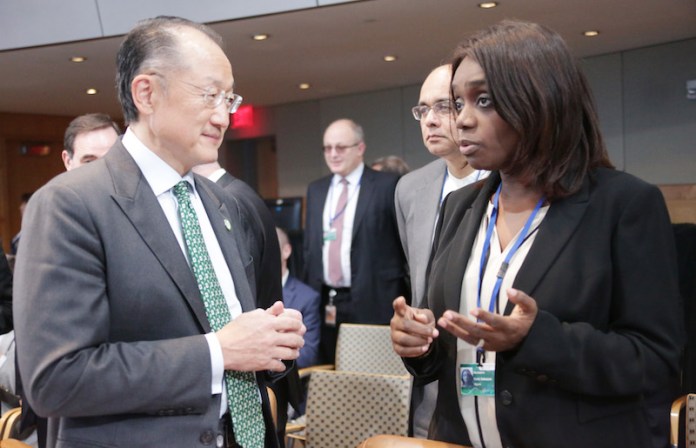- Global Community Makes Record $75bn Commitment to End Extreme Poverty
A coalition of more than 60 donor and borrower governments have agreed to ratchet up the fight against extreme poverty with a record $75 billion commitment for the International Development Association (IDA), the World Bank’s fund for the poorest countries.
“This is a pivotal step in the movement to end extreme poverty,” World Bank Group President Jim Yong Kim said. “The commitments made by our partners, combined with IDA’s innovations to crowd in the private sector and raise funds from capital markets, will transform the development trajectory of the world’s poorest countries. We are grateful for our partners’ trust in IDA’s ability to deliver results.”
The funding, according to a release issued by the global body, will enable IDA to dramatically scale up development interventions to tackle conflict, fragility and violence, forced displacement, climate change, and gender inequality; and promote governance and institution building, as well as jobs and economic transformation -areas of special focus over the next three years. These efforts are underpinned by an overarching commitment to invest in growth, resilience and opportunity.
“With this innovative package, the world’s poorest countries – especially the most fragile and vulnerable – will get the support they need to grow, create opportunities for people, and make themselves more resilient to shocks and crises,” said Kyle Peters, World Bank Group Interim Managing Director and Co-Chair of the IDA18 negotiations. “IDA’s focus on issues like climate change, gender equality and preventing conflict and violence will also contribute to greater stability and progress around the world.”
Financing during the IDA18 replenishment period, which runs from July 1, 2017 to June 30, 2020, is expected to support: Essential health and nutrition services for up to 400 million people; access to improved water sources for up to 45 million people; financial services for 4-6 million people; safe childbirth for up to 11 million women through provision of skilled health personnel.
Others are: training for 9-10 million teachers to benefit 300+ million children; immunisations for 130-180 million children; better governance in 30 countries through improved statistical capacity; and an additional 5 GW of renewable energy generation capacity.
“IDA is writing a whole new chapter in the story of development,” said Dede Ekoue, IDA18 co-chair and Togo’s former Minister of Development. “Together with donors, working hand-in-hand with borrower governments, we are putting forward an innovative, ambitious and responsive package of support that gives hope to the poorest. These interventions will help transform the lives of billions of people living in IDA countries.”
To finance this groundbreaking package, IDA is proposing the most radical transformation in its 56-year history. For the first time, IDA is seeking to leverage its equity by blending donor contributions with internal resources and funds raised through debt markets. By blending concessional contributions from donors with its own resources and capital market debt, IDA will significantly increase the financial support it provides to clients.
“The innovative financing package offers exceptional value for money, with every $1 in partner contributions generating about $3 in spending authority,” said Axel van Trotsenburg, World Bank Vice President for Development Finance. “It is one of the most concrete and significant proposals to date on the Addis Ababa Action Agenda – critical to achieving the 2030 Sustainable Development Goals.”
The additional financing will enable IDA to double the resources to address fragility, conflict and violence (more than $14 billion), as well as the root causes of these risks before they escalate, and additional financing for refugees and their host communities ($2 billion).
Increased financing will help strengthen IDA’s support for crisis preparedness and response, pandemic preparedness, disaster risk management, small states and regional integration, the release noted.
Efforts to stimulate private sector development in the most difficult environments, at the core of job creation and economic transformation, will receive a major push in the form of a new $2.5 billion Private Sector Window (PSW).
The PSW, being introduced together with the International Finance Corporation (IFC) and Multilateral Investment Guarantee Agency (MIGA), will help mobilise private capital and scale up private sector development in the poorest countries, particularly in fragile situations. The funds will also help governments strengthen institutions, mobilise resources needed to deliver services, and promote accountability.
A total of 48 countries pledged resources to IDA; additional countries are expected to pledge in the near-term. The World Bank Group is continuing the tradition of contributing its own resources to IDA.
“One of the extraordinary things about IDA is that it brings different countries together to help the poorest. In this replenishment in particular, we’ve really seen that IDA is truly a global coalition,” said van Trotsenburg.
A total of 75 low-income countries are eligible to benefit from the IDA18 financing package.
The World Bank’s IDA, established in 1960, helps the world’s poorest countries by providing grants and low- to zero-interest loans for projects and programs that boost economic growth, reduce poverty, and improve poor people’s lives.
IDA is a multi-issue institution, supporting a range of development activities that pave the way toward equality, economic growth, job creation, higher incomes, and better living conditions. Its work covers, for example, primary education, basic health services, clean water and sanitation, agriculture, business climate improvements, infrastructure, and institutional reforms.


 Billionaire Watch2 weeks ago
Billionaire Watch2 weeks ago
 Startups4 weeks ago
Startups4 weeks ago
 News4 weeks ago
News4 weeks ago
 News4 weeks ago
News4 weeks ago
 Bitcoin4 weeks ago
Bitcoin4 weeks ago
 Naira4 weeks ago
Naira4 weeks ago
 Forex3 weeks ago
Forex3 weeks ago
 Treasury Bills4 weeks ago
Treasury Bills4 weeks ago
























